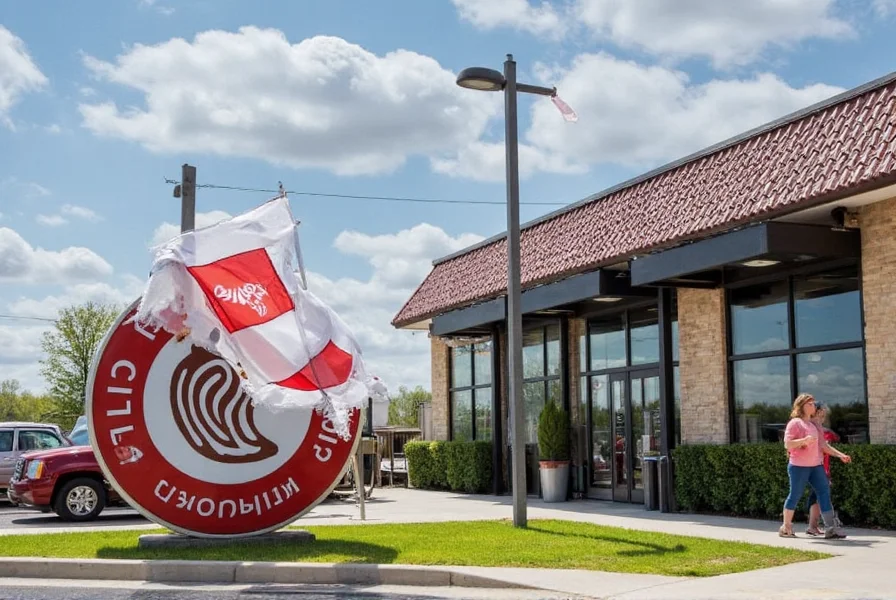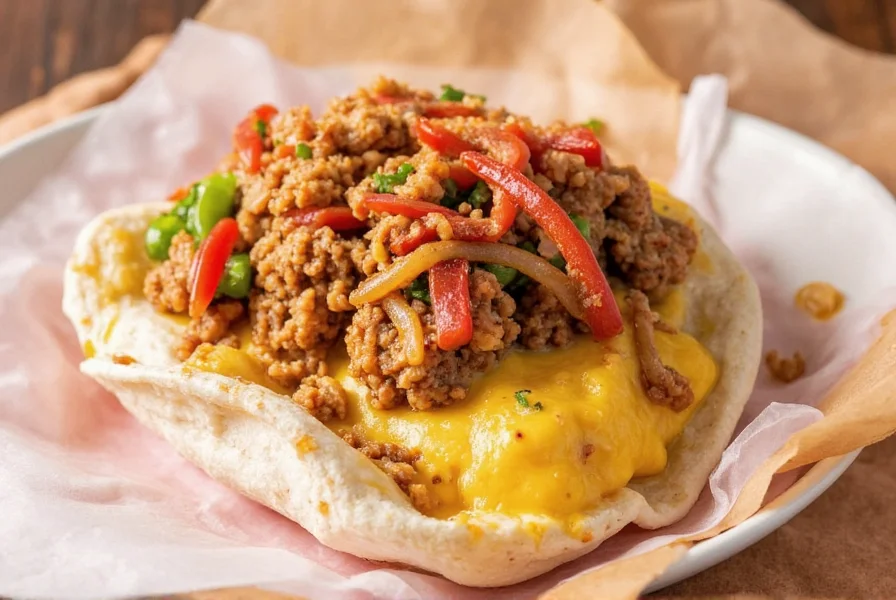Chipotle is a smoked and dried jalapeño pepper. The word comes from the Nahuatl language, meaning "smoked chili." It's not a different type of pepper, but rather a preparation method applied to fully mature (usually red) jalapeños. This article explains everything you need to know about chipotle, from its origins to culinary uses and storage tips.
Table of Contents
- What Exactly Is Chipotle?
- A Brief History of Chipotle
- Flavor Profile: Smoky, Spicy, and Everything Nice
- Common Uses in Everyday and Gourmet Cuisine
- How Is Chipotle Different from Other Peppers?
- Buying Guide: How to Choose the Best Chipotle Products
- Pro Tips for Using Chipotle Like a Pro
- Storage & Shelf Life: Keep the Flavor Fresh
- Frequently Asked Questions
- Final Thoughts: The Meaning Behind the Smoke
What Exactly Is Chipotle?
The term 'chipotle' comes from the Nahuatl language — spoken by the Aztecs — and means 'smoked chili'.

Technically speaking, chipotle is a smoked and dried jalapeño pepper. Jalapeños are picked when they're fully mature (usually red), then slowly smoked until they develop their signature dark brown, wrinkled appearance and deep, rich flavor.
So, Is It a Pepper or a Powder?
- Fresh/Dried Chipotle: The whole, dried peppers you see in Mexican markets.
- Chipotle Powder: Ground form of the dried chipotle used in rubs, sauces, and marinades.
- Chipotle in Adobo: Whole or chopped chipotles preserved in a tangy tomato-based sauce — commonly found in cans.
A Brief History of Chipotle
Mexico has been drying and smoking chilies for centuries. Before refrigeration, smoking was one of the best ways to preserve fresh ingredients. The chipotle emerged as a way to store jalapeños long-term while adding a unique flavor profile through smoke-drying techniques.
Over time, chipotle became a staple in Mexican cooking — especially in regions like Oaxaca and Veracruz. Its popularity grew internationally thanks to the globalization of Mexican cuisine and the rise of fast-casual chains like Chipotle Mexican Grill (yes, named after the pepper).
Flavor Profile: Smoky, Spicy, and Everything Nice
If you were to describe chipotle in just three words, they would be: smoky, earthy, spicy.
| Characteristic | Description |
|---|---|
| Heat Level | Moderate (around 2,500–8,000 Scoville units) |
| Smokiness | High — due to slow drying over wood fires |
| Sweetness | Mild — hints of caramelized sweetness from matured jalapeños |
| Earthy Notes | Rich — adds depth to stews, sauces, and meats |
Common Uses in Everyday and Gourmet Cuisine
From home kitchens to Michelin-starred restaurants, chipotle is incredibly versatile. Here are some of the most popular applications:
- Sauces: Chipotle aioli, adobo sauce, mole, BBQ sauces
- Rubs: Used on grilled chicken, pork, ribs, or fish
- Marinades: Infuse meats and tofu with deep flavor before cooking
- Soups & Stews: Adds warmth and complexity to bean soups, chilis, and broths
- Dips: Blended into sour cream, guacamole, or hummus

How Is Chipotle Different from Other Peppers?
Let's break it down with a comparison chart to understand how chipotle stacks up against other popular chilies:
| Pepper Type | Heat Level | Smokiness | Use Cases |
|---|---|---|---|
| Chipotle | Moderate | High | Sauces, marinades, rubs, salsas |
| Ancho | Mild | Low | Mole, braises, spice blends |
| Guajillo | Mild-Moderate | Medium | Salsas, marinades, soups |
| Hatch Chiles | Mild-Hot | Varying | Southwestern dishes, rellenos |
| Ghost Pepper | Extremely Hot | None | Hot sauces, novelty dishes |
Buying Guide: How to Choose the Best Chipotle Products
Whether you're at a local market or browsing online, here's how to select high-quality chipotle products:
1. Whole Dried Chipotles
- Look for: Deep reddish-brown color, flexible texture
- Avoid: Brittle or overly dry chips
- Best For: Making homemade adobo sauces or infusing oils
2. Chipotle in Adobo
- Look for: Soft, pliable peppers; thick, tangy sauce
- Avoid: Canned versions with preservatives or artificial coloring
- Best Brands: La Costeña, Don Julio, El Yucateco
3. Chipotle Powder
- Look for: Rich, aromatic scent; no clumping
- Avoid: Powders with added fillers or anti-caking agents
- Best For: Dry rubs, seasoning blends, and marinades
4. Chipotle Paste
- Look for: Thick, smooth texture; natural ingredients only
- Best Use: Instant heat and smokiness in stews, soups, or dressings
Pro Tips for Using Chipotle Like a Pro
You don't need a culinary degree to get the most out of chipotle. Try these tips to take your dishes from bland to bold:
- Blend into Mayo: A dollop of chipotle mayo can transform burgers, sandwiches, or tacos.
- Toast Seeds First: Lightly toast the seeds before grinding to enhance the smoky aroma.
- Add to Bean Dishes: Elevates refried beans, black beans, or lentils instantly.
- Balance with Acid: Pair chipotle with lime juice or vinegar to brighten its earthiness.
- Make Your Own Adobo: Blend chipotles with vinegar, garlic, herbs, and a bit of sugar for a homemade sauce.

Storage & Shelf Life: Keep the Flavor Fresh
Storing chipotle properly ensures you'll always have it ready to use without losing flavor:
- Whole Dried Peppers: Store in an airtight container away from light. Lasts up to a year.
- Chipotle in Adobo: Once opened, keep refrigerated and use within 2 weeks.
- Chipotle Powder: Keep in a cool, dry place. Lasts about 6 months.
- Homemade Chipotle Paste: Refrigerate for up to 2 weeks or freeze in ice cube trays for longer storage.
Frequently Asked Questions About Chipotle
What does "chipotle" literally mean?
The word "chipotle" comes from the Nahuatl (Aztec) language, combining "chil" (chili pepper) and "poctli" (smoke). So it literally translates to "smoked chili." This perfectly describes the traditional preparation method where ripe jalapeños are smoked and dried.
Is chipotle a specific type of pepper or just a preparation method?
Chipotle refers specifically to a smoked and dried jalapeño pepper. It's not a different species of pepper but rather a preparation method applied to fully mature (usually red) jalapeños. The smoking process transforms the fresh jalapeño into what we call chipotle.
How is chipotle different from regular jalapeño?
Fresh jalapeños are green, crisp, and have a bright, grassy heat. Chipotles are jalapeños that have been allowed to fully ripen (turning red) and then smoked and dried. This process gives them a deep, complex flavor profile with smokiness, earthiness, and subtle sweetness that fresh jalapeños lack. The texture also changes from crisp to leathery.
Why is chipotle so popular in modern cuisine?
Chipotle offers a unique combination of moderate heat and intense smokiness that adds depth to dishes without overwhelming them. Its versatility makes it valuable across many cuisines - from traditional Mexican cooking to American BBQ, fusion dishes, and even gourmet restaurant creations. The distinctive flavor profile bridges cultural culinary traditions while offering complex taste in a convenient form.
Is Chipotle Mexican Grill named after the pepper?
Yes! The restaurant chain Chipotle Mexican Grill takes its name directly from the chipotle pepper. The founders chose this name to reflect their focus on high-quality ingredients and authentic preparation methods, with the smoky flavor of chipotle representing their commitment to bold, distinctive flavors.
How spicy is chipotle compared to other peppers?
Chipotle registers between 2,500–8,000 Scoville heat units, placing it in the moderate heat range. For comparison, it's generally hotter than poblano peppers (1,000–2,000 SHU) but milder than habaneros (100,000–350,000 SHU). The smoking process doesn't increase the heat level but does transform how the heat is perceived, making it more rounded and complex rather than sharp.
What's the difference between chipotle in adobo and regular chipotle peppers?
Chipotle peppers are the dried, smoked jalapeños themselves. Chipotle in adobo refers to these dried peppers that have been rehydrated and preserved in a tangy, slightly sweet sauce made with tomatoes, vinegar, garlic, and spices. The adobo sauce adds another layer of flavor complexity and makes the peppers more convenient to use in many recipes.
Can I make my own chipotle peppers at home?
Yes, though it requires patience and proper equipment. To make authentic chipotle peppers, you'd need fully ripened red jalapeños and a smoker. The peppers are smoked at low temperatures (around 200°F/93°C) for 8-12 hours until they're leathery but not brittle. This home process replicates the traditional Mexican method that gives chipotle its distinctive flavor.
Final Thoughts: The Meaning Behind the Smoke
At its core, the meaning of chipotle isn't just about a pepper — it's about tradition, preservation, and flavor. From ancient Mexico to your modern kitchen, chipotle bridges cultures and cuisines with its distinctive smoky kick.
Whether you're using it to add depth to a stew, create a fiery dip, or simply impress your friends at a backyard barbecue, understanding the essence of chipotle empowers you to cook smarter and bolder.
Now that you've got the full breakdown, go ahead — light up your next dish with a touch of chipotle magic!











 浙公网安备
33010002000092号
浙公网安备
33010002000092号 浙B2-20120091-4
浙B2-20120091-4